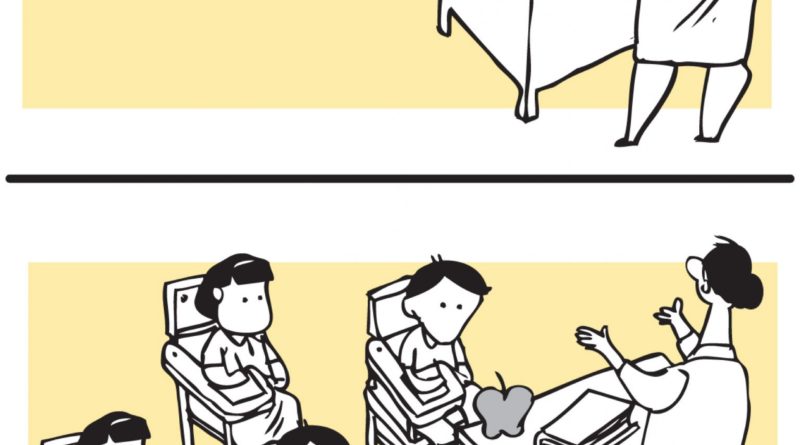Education: Home Front – Are smaller class sizes worth the trouble?
Ask any parent if he wants his child to be in a class of 15 or 30, and the answer is obvious.
Intuitively, smaller class sizes mean more personalised attention, possibly more learning and better grades.
So observers in recent years have called for the Ministry of Education (MOE) to review class sizes, as student enrolment numbers fall and schools merge.
Non-Constituency MP Leon Perera called on the MOE earlier this month in Parliament to conduct a trial here to find out if reduced sizes could improve students’ results, citing academic studies that have shown how this could improve grades and students’ holistic development.
Teacher-student ratios have dropped from 1:19 in 2011 to 1:16 last year in primary schools, and from 1:15 in 2011 to 1:12 last year in secondary schools – comparable to Organisation for Economic Cooperation and Development (OECD) averages.
But class sizes have not become much smaller. Primary and secondary schools have an average of 33 to 34 students per class, except for Primary 1 and 2 levels, which have an average of 29 pupils.
Average OECD primary and secondary class sizes are 21 and 24.
While the average class size is calculated by dividing the total number of students by that of form classes, the teacher-student ratio involves dividing the total number of students by that of teachers.

.
A student-teacher ratio of 10:1 does not mean that the average class size is 10 students – the work of some teachers may be in other areas such as special needs or curricula planning.
Having smaller class sizes across the system is a huge investment. But some observers say it is worthwhile to pay closer attention to how it could facilitate more creativity and collaboration – vital skills in today’s age of disruption.
The calls for smaller classes come even as Singapore students have emerged tops in a test of collaborative problem-solving by the OECD that was released on Tuesday.
The OECD’s Programme for International Student Assessment test has traditionally assessed abilities in science, mathematics and reading, but it is including skills that are becoming increasingly important in the new economy.
And Singapore is on the right track, with the highest proportion of top performers – more than 20 per cent of students here achieved the highest level of proficiency in collaborative problem-solving, compared with 8 per cent worldwide.
But the country is not one to rest on its laurels. Going forward, schools will need to do even more beyond the textbooks – to impart skills such as the ability to work in teams, manage conflict, solve problems creatively and communicate effectively.
And the need for more creative teaching methods may support the case for smaller classes.
MOE: TWO-PRONGED APPROACH
In response to queries from The Straits Times, the MOE said the form class size is only one facet of how it organises its pool of resources. The OECD’s research, it said, has shown that between reducing class sizes and investing in teacher quality, the latter provides for better educational outcomes for students.
“This means that a good teacher in charge of a larger class generally provides a higher quality of education for this class of students, than two less able teachers teaching two smaller classes of students.”
Hence, class sizes vary based on subject and students’ learning needs, and the MOE invests in teacher development. For example, classes for weaker students in the Learning Support Programme and Dyslexia Remediation Programme are conducted in classes of eight to 10, and four to six respectively. Primary 1 and 2 pupils have smaller classes so that they can better ease into formal schooling from pre-school education.
The MOE said it encourages teachers to upgrade their skills and knowledge through courses in curricula and student development, for instance.
“We are confident that this emphasis on teacher quality would result in better educational outcomes for our students, which cannot be achieved by just bluntly reducing form class sizes across the board,” said a spokesman.
If it assigned one teacher for a class of 16 pupils – which was the pupil-teacher ratio (PTR) for primary schools last year, every primary school teacher would only be teaching in front of a class, with no time left for other activities such as lesson preparation, co-curricular activities or having small-group consultations, she said.
“At the system level, we also will not be able to devote senior professionals to review curriculum, conduct professional development activities or participate in research.”
She added that teachers’ contributions go beyond the classroom, and the PTR is a better reflection of the level of teacher resourcing provided to pupils.
The size of the teaching force has grown by about 20 per cent in the last decade and, since 2013, has stabilised at more than 33,000 teachers. Meanwhile, the number of students entering Secondary 1 has fallen by over 20 per cent from 50,000 in 2006 to 38,000 last year.
While most people would assume that – with all things being equal – smaller classes would be beneficial, in reality, not all things can be held equal, said MOE.
For instance, halving class sizes from 40 to 20 would mean the teaching force would have to be doubled – and this would mean a trade-off in teacher quality as numbers are ramped up significantly, it noted.
There are finite manpower resources and competing demands in other sectors as birth rates fall and smaller cohorts enter the workforce, it added.
ARE SMALLER CLASSES COST-EFFECTIVE?
Said National University of Singapore economics lecturer Kelvin Seah: “I believe the question should not be so much on whether a class size reduction has a positive impact, but whether a class size reduction is worthwhile from a cost-benefit perspective.”
“Reducing class sizes costs money. It requires hiring more teachers and possibly building more classrooms if schools are already functioning at full capacity,” he added. “The beneficial effect of a class size reduction really needs to be large enough in order to justify reducing class size.”
Smaller classes allow more room for discussion and questions, but only if teachers know how to adapt lessons accordingly, said experts.
Education policy expert Jason Tan from the National Institute of Education (NIE) said that in theory, reduced class sizes would offer more interactional space for students and teachers. “You have to manage the learning needs of 25 instead of 35. However, teachers need to adapt their teaching approaches in order to take advantage of any benefits offered by a reduced class size.”
Said Dr Yeap Ban Har, principal of Marshall Cavendish Institute, which provides teacher training: “A class of 25 to 30 students would be good. It’s large enough to get discussions going, but small enough for an average teacher to observe every student carefully.”
He added: “The actual number doesn’t really matter. What matters is how the teacher teaches. The numbers just make it more manageable for them.”
However, is it a case of parents who want more individual attention for their children having to pay for it themselves via private tuition?
Tuition centres often use “smaller class sizes” as a selling point, noted Associate Professor Tan. “Implicit in their claim is that it’s a stark contrast to the supposedly larger classes in mainstream schools.”
Indeed, adjunct professor S. Gopinathan at the Lee Kuan Yew School of Public Policy, former dean of NIE’s school of education, said: “Could parents feel that their child’s individual learning needs are not being met in schools and are better addressed by tuition?”
PROVIDING SPACE FOR MORE CREATIVITY
Some parents and teachers think that there is room for more discussion on making classes smaller, at a time when schools are encouraging more creativity and applied learning.
Madam Joyce Ong, 43, a private tutor whose Secondary 2 daughter is in a class of 36 students, said: “Ideally, class sizes should not be more than 30, so there is more student-teacher time, and students have more chance for clarifications, engagement.”
A 33-year-old primary school teacher said: “With a larger class, there is less room for questions and facilitation. Teachers have to cover the syllabus, so they rush the process.”
“Kids depend on teachers emotionally – it can be draining to be spread thinly,” she said, adding that there are also students with special needs to look after.
Mrs Christine Lim, 40, a part-time headhunter, said she sees the difference that a smaller class size can have. Her Primary 4 son is in a class of 40, while her Primary 6 daughter, who is in the Gifted Education Programme, has about 20 classmates.
“My son’s teachers are so busy and have so many classes, and I don’t blame them. If you’re an average pupil, the teacher doesn’t really know you,” she said. “But my daughter’s teachers remember her quirks even one to two years later.”
She added: “Teaching is very personal. You are not just teaching, you have to motivate, connect with the children. All this requires energy.”
Prof Gopinathan pointed out that even the best-trained teacher can find it difficult coping with a class of 40 students.
He said: “Now we want children to be more inquisitive, explain their insights, have more applied learning… This is more complex than direct transmissive teaching.”
Another primary school teacher agreed, adding: “At a time when we are asking pupils to think innovatively and be creative, there should be a good facilitator with more time on hand to help them. And not one who is swamped by 39 other requests.
“In a class of 40, I can barely answer five questions from the pupils before I know I have to move on, otherwise we may not complete what is required.”
The teacher declared: “Times have changed, teaching has changed – classroom sizes have not.”
He said: “Perhaps it’s interesting to note why we have smaller-size classrooms at the junior college, tertiary and university levels, but not at primary-secondary? You mean kids of a younger age do not have the ability to engage and think deeper?”
He also said he understands that the authorities “may not be keen to allocate more budget or resources in creating this smaller class size environment”.
“But I thought we’d be able to do it now more than at any other time,” he added. “Given the progress we have made and the strides we have taken – it would certainly take our education into the next lap and beyond.”
More work can be done to look at the pros and cons of reducing class sizes before dismissing the idea, said Prof Gopinathan. “Without a local knowledge base, we can’t say it doesn’t make a difference based on international research.”
.










